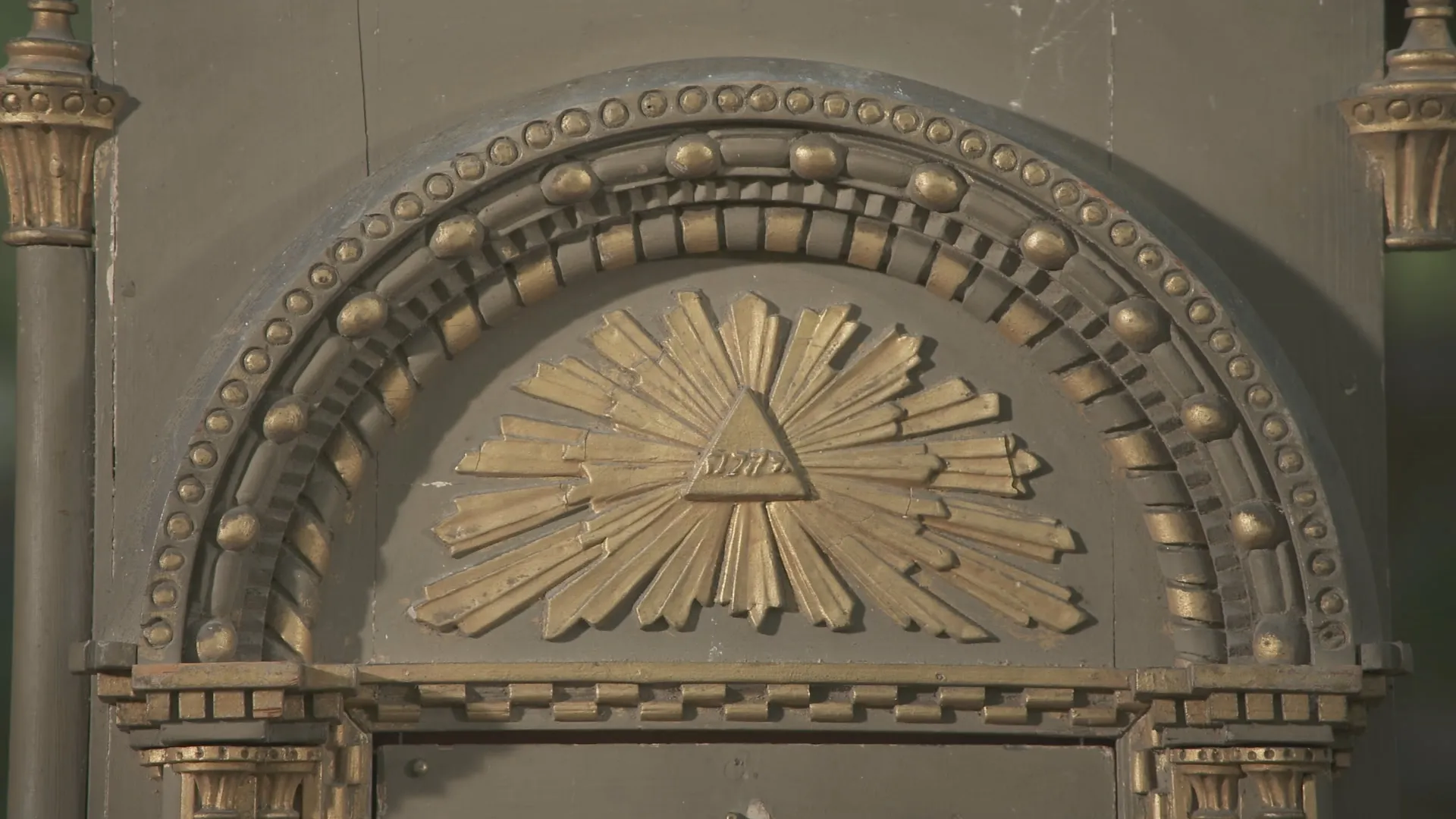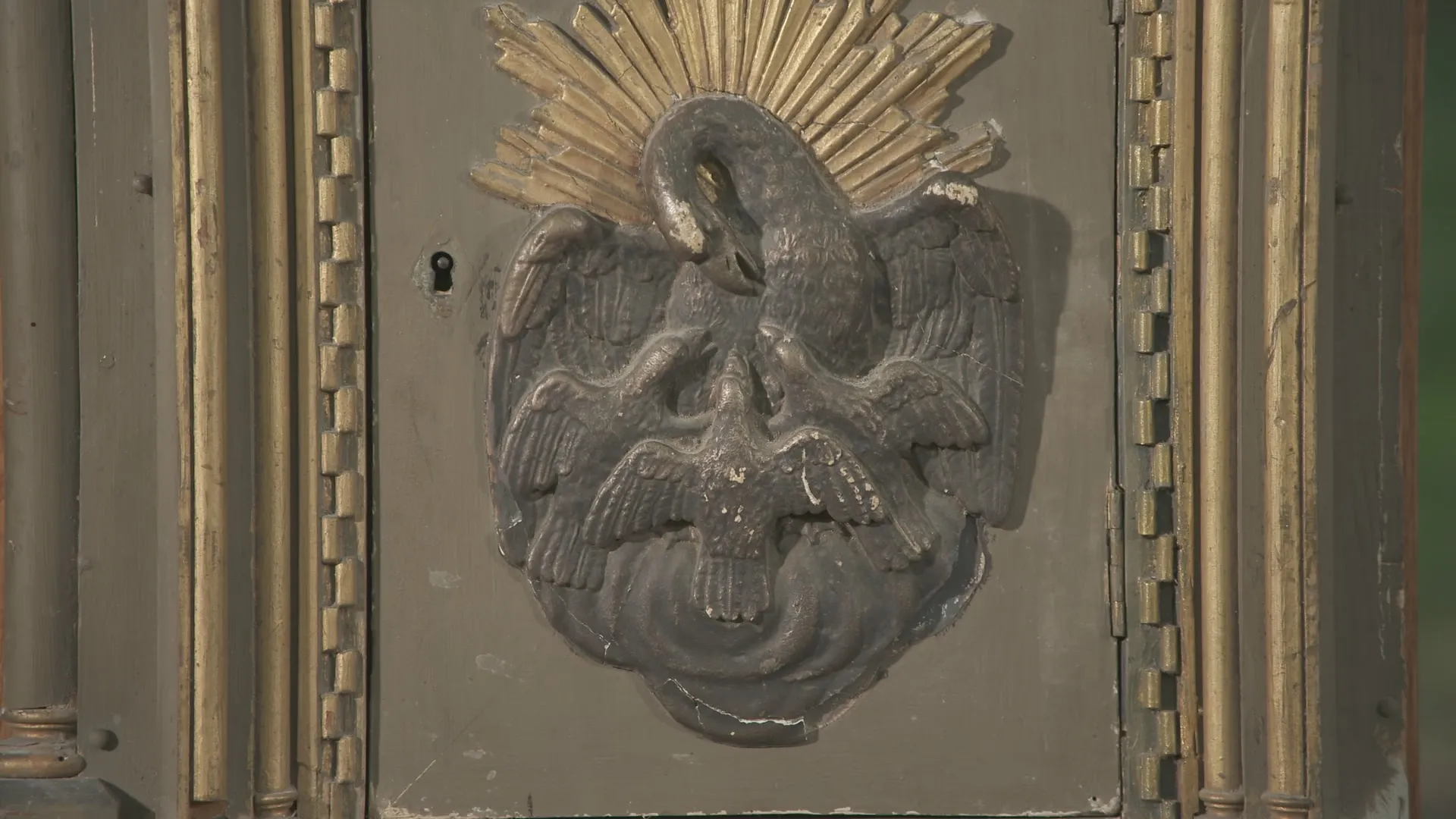GUEST: I got this for Christmas a couple of years ago from my parents.
APPRAISER: Mm-hmm.
GUEST: I found this in an antique store down in New Orleans. Was told I didn't need it, and then they surprised me for Christmas with it.
APPRAISER: Right, wow.
GUEST: So I was very excited when I ended up opening it.
APPRAISER: What drew you to it in the first place?
GUEST: Um, just the ornateness, and I'm Catholic, as well.
APPRAISER: Right.
GUEST: And so, the tabernacle...
APPRAISER: Uh-huh.
GUEST: ...and the church and all that.
APPRAISER: Right.
GUEST: And then also the pelicans on the front...
APPRAISER: Yeah.
GUEST: ...which is Louisiana-related, it's on our n, on our flag.
APPRAISER: It's also a Christian symbol. Do you know what the story of the pelican is?
GUEST: I did a little research on that.
APPRAISER: Mm-hmm.
GUEST: And apparently, when mom pelicans cannot feed their babies, they will pierce their breast and feed them blood, which represents the body
and blood of Christ.
APPRAISER: Yes, exactly, his sacrifice for mankind.
GUEST: Sacrificing, yes.
APPRAISER: So it's a very fitting thing to have on a tabernacle door. And it would have been, uh, uh, attached to a much larger scheme. The door
would have opened to contain the items that were used in communion. The tabernacle itself just means a sacred space.
GUEST: Right.
APPRAISER: And they come in all different shapes and sizes, all different forms. And they were very popular in the 15th, 16th, and 17th centuries,
especially in Italy and, and other areas in Europe, in France.
GUEST: Yeah.
APPRAISER: And later on, they became a little bit more simplified, like this. But they always have this sort of architectural framing. So on here, you
have these columns, and you have this intricate egg and dart border here, the spirals, and these beads. This is quite a curious symbol here. Could be Hebrew. Gray painting, uh, and gilding like this is a feature that you often see on Italian furniture of the sort of 18th and 19th century. Also in French, we think this is probably French. I...
GUEST: Do you know what century it would be from?
APPRAISER: It's more likely to be from the early 19th century, possibly over into the late 18th, but I, I certainly do not think it's 17th, uh, century.
GUEST: Okay.
APPRAISER: It's pine and other woods behind. We can see some of those have been replaced. And you can see that it's kind of fragmentary. You've got a missing column here.
GUEST: Mm-hmm.
APPRAISER: And I suppose it kind of s, uh, fits that it would have been removed from a church. It would have s, been sort of built in. So you
wouldn't necessarily expect to have all of those pieces.
GUEST: It had all the other pieces with it.
APPRAISER: It did?
GUEST: At the antique store, but we didn't... This is the only piece that I was given. It had the whole setup.
APPRAISER: The whole, the whole...
GUEST: It had the whole wall.
APPRAISER: Really?
GUEST: Mm-hmm, yeah.
APPRAISER: Oh, and how far did that extend?
GUEST: I mean, was... It was pretty big.
APPRAISER: Really?
GUEST: Yeah.
APPRAISER: Oh, okay.
GUEST: But I, I... We, we didn't get it.
APPRAISER: Of course.
GUEST: We just didn't have room for it.
APPRAISER: Sure, I see. Well, this is probably the most exciting part of it.
GUEST: This is what, this is what drew me the most, too.
APPRAISER: I think, in a retail setting, anywhere between $1,000 to $1,500 would be...
GUEST: Okay.
APPRAISER: ...uh, uh, a s, a suitable asking price.
GUEST: Yeah.
APPRAISER: (murmurs)
GUEST: I used to watch ROADSHOW with my grandmother growing up. Drinking tea, watch the ANTIQUES ROADSHOW, and so I was so, super-excited to come.













